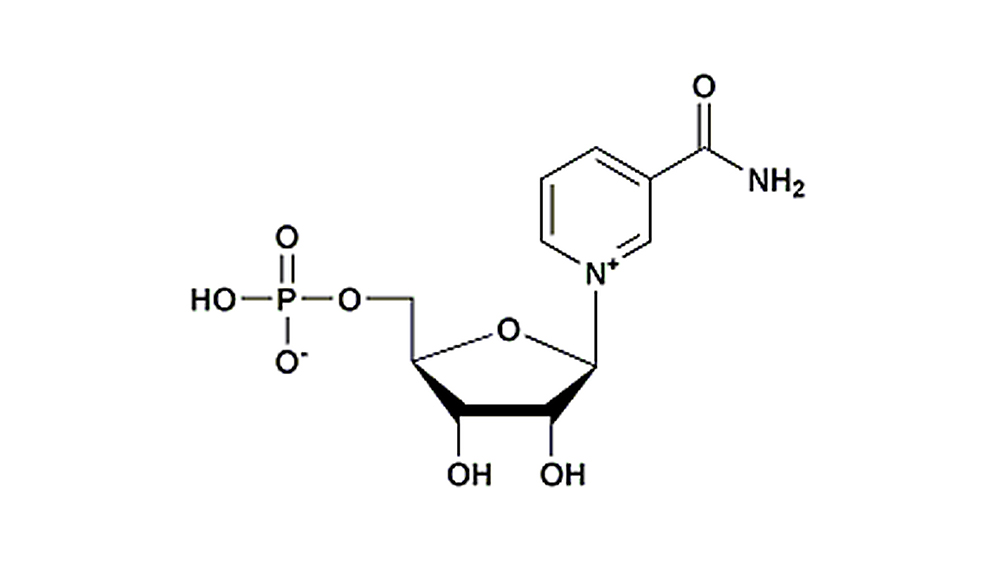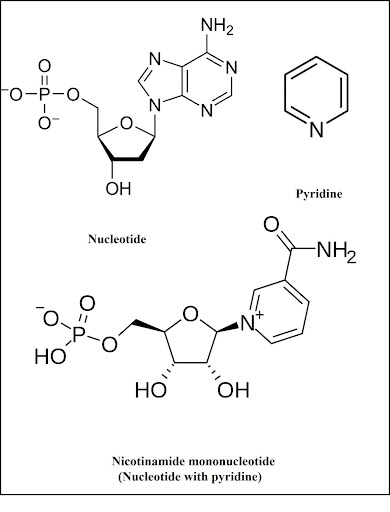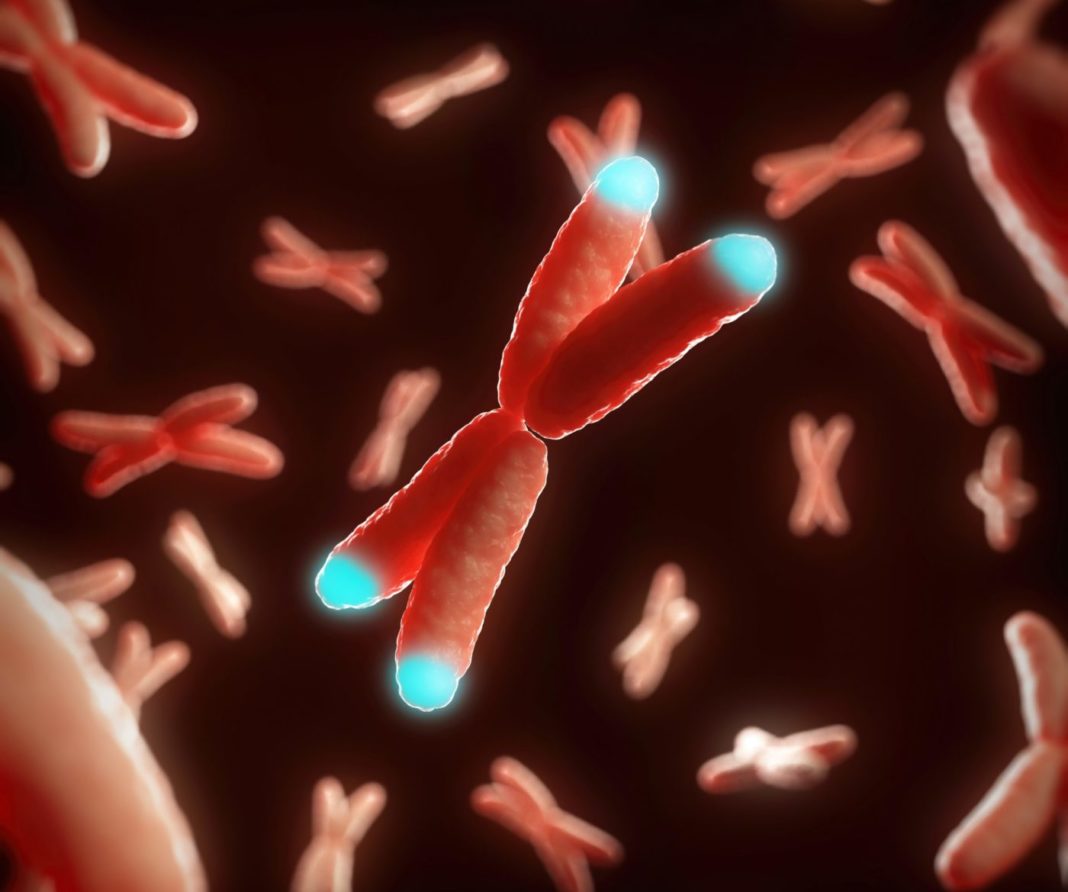ABC About Nicotinamide Mononucleotide (NMN)
Science • March 18, 2022 • 8min read

Nicotinamide mononucleotide (NMN) is a naturally occurring anti-aging metabolite and synthetic product
Nicotinamide mononucleotide (NMN) is a potent bioactive nucleotide. If we imagine the long chains of DNA and RNA molecules as strings of pearls, each pearl would be a nucleotide. Nucleotides are chemical compounds that are connected to one to three phosphate groups and a 5-carbon sugar (ribose or deoxyribose) to which a nitrogenous base is bound.
To simplify this, if you look at the structure of DNA you can see a helix resembling a “ladder”. The two sides of the ladder are also known as sugar-phosphate backbones. Two sugar-phosphate backbones stand against each other and function as frames for DNA structure. In between these two sugar-phosphate backbones is the nitrogenous base (also called nucleobase) formed by DNA building blocks (nucleotides) which are Adenine (A), Guanine (G), Thymine (T), and Cytosine (C).

Source: genome.gov
Unlike DNA and RNA which exist as long nucleotide chains, NMN performs its biological role as a single nucleotide. NMN regulates age and age-associated complications by influencing the level of NAD+ (Nicotinamide adenine dinucleotide) in our cells.

Source: genome.gov
Precursors are chemical substances that, in the course of chemical reactions, are transformed into more active chemical compounds. Similarly, NMN acts as a precursor for NAD+. The cellular levels of NAD+ decline with age. NMN is naturally available in many food products and health supplements. Before we go deep into the biology of NMN based on evidence from cell culture, animal models, and human clinical studies, please find below some essential facts about NMN:

Structure of Nicotinamide Mononucleotide: NMN is a bioactive nucleotide containing one phosphate group and the sugar ribose derived from niacinamide or nicotinamide (NAM or a form of Vitamin B3) bound to it. Because of its structure, it is recognized by a specific enzyme and used for the synthesis of NAD+, the increased level of which can be highly beneficial for health and longevity.
The location of NMN in the human body tissue and fluids: Placenta, Blood, Urine
The intercellular location of NMN in the human Body: Nucleus, Mitochondria, Cytoplasm
Natural food sources of NMN: Immature soybean pods, cabbage, cucumber, broccoli, tomato, mushroom, avocado, raw beef, and shrimp. The daily amount of consumption through a healthy diet: 2mg.
NMN Food supplements: Many NMN products are available for 50 to 1000 mg/day intake, mainly, in the form of non-liposomal capsules.
The Role Of NAD+ And Its Connection With NMN
The NAD+ levels in our cells drop steadily as we age. By middle age, our NAD+ level can drop to half of the level we had in our youth. This NAD+ depletion is considered a hallmark of aging and is associated with diverse age-related disorders. Hence, researchers believe that increasing our NAD+ level can be beneficial for our physical performance, muscle regeneration, and metabolic fitness, as well as boost longevity.
Besides, our daily NAD+ level changes depending on whether we eat, but is also highly sensitive to the time of the day. During the 24 hours, its level oscillates, meaning that it goes up and down in a programmed pattern. For example, in the morning, our NAD+ level tends to go up, but then we usually eat a large meal and it drops again. But If we go without food for a few more hours, our NAD+ level will be higher for a longer time, since it rises during periods of fasting.
Moreover, homeostasis of NAD+ is crucial for cell survival and function through its critical role in central cellular pathways and reactions:
The Improtant Role Of NAD+
- Hydrogenated form of NAD+ (NADH): an essential component of several fundamental metabolic pathways, including glycolysis, fatty acid beta-oxidation, and tricarboxylic acid cycle.
- NAD+ is a crucial substrate for many enzymes (also called NAD+ consuming enzymes), including sirtuins, Poly ADP-ribose polymerases (PARPs), CD38/157, BST1, and tankyrase (TNKS), and which catalyze several fundamental cellular reactions.
Sirtuins are Deacylate proteins, which means that they remove acyl tags of varying lengths from proteins.
In this sense, they catalyze deacetylation (removal of a two-carbon acetyl group), deglutarylase (removal of a five-carbon glutaryl group), lipoamidase (hydrolysis of lipoylated proteins), demalonylase (removal of a three-carbon malonyl group), and desuccinylase (removal of a four-carbon succinyl group) activities.
Out of these, deacetylation of histone proteins plays a major role in the regulation of gene expression because it enables histones to bind DNA more tightly. Other reactions catalyzed by sirtuins are much less studied but are presumed to affect the catalytic activity, stability, and binding abilities of their target proteins.
The role of PARPs(Poly ADP-ribose) is DNA Repair. When DNA is damaged, PARPs use up NAD+ to attach one part of it (ADP-ribose) to itself or histone proteins. This loosens the contact between histones and DNA, so DNA becomes more accessible to factors that can repair it.
CD38 and CD157 (otherwise known as BST1) are enzymes that use up NAD+ to produce cyclic ADP-ribose (cADPR). The cADPR molecule then acts to mobilize Ca+ ions which are needed for muscle contraction.
How Is NMN Converted To NAD+?
When taken as a supplement, NMN only needs to go through one metabolic step to become NAD+. The NMNAT enzyme is a protein that is always present in our cells and is required for the survival of all living organisms. The NMN transition for the NAD+ production is very important and this is where the enzyme NMNAT (nicotinic acid mononucleotide adenylyltransferase) is required.
This enzyme catalyzes the conversion of NMN into NAD+ in a reaction that uses ATP (adenosine triphosphate), which is an energy-carrying molecule present in the cells of all living organisms.
In addition to NMN food supplements, our cells also make NAD+ by themselves, which happens through two main pathways.
- The synthesis of NAD from Nicotinamide (NAM), the main source of NAD+ in cells, is carried out through the Salvage pathway.
In this pathway, the enzyme NAMPT (nicotinamide phosphoribosyltransferase) catalyzes the production of NMN from NAM (nicotinamide, a form of vitamin B3) and 5-phosphoribosyl-1-pyrophosphate.
NMN is then converted to NAD+ as described previously, with the help of the enzyme NMNAT.
- The synthesis of NAD from Nicotinic acid (NA) directly from dietary sources through the Preiss-Handler pathway
Step 1: The enzyme NAPRT (nicotinic acid phosphoribosyl-transferase) catalyzes the production of NAMN (nicotinic acid mononucleotide) from nicotinic acid (NA, a form of vitamin B3).
Step 2: The enzyme NMNAT uses either NAMN or NAM to make NAAD+ (nicotinic acid adenine dinucleotide).
Step 3: Finally, the enzyme NADS (NAD+ synthetase) converts NAAD+ to NAD+.
Evidence From Animal Model Studies On The Therapeutic Effects Of NAD+
- Improvement in insulin secretion, glucose tolerance, and lipid profile: Age-induced type-2 diabetic mice show significantly reduced NAMPT and NAD+ levels in various body organs. NMN administration leads to improved insulin secretion, healthy lipid profile, and glucose tolerance in such mice.
- Improvement in blood circulation: NMN supplementation through drinking water restored NAD+ levels in C57BL/6 (genetically modified) mice. The supplementation further leads to a reversal of age-associated arterial dysfunction and oxidative stress.
- Suppression of body weight: Orally administered NMN suppressed aged associated body weight gain through increased physical activity and energy metabolism in naturally aged mice.
- Balance of bone and fat: NMN supplementation restores the bone-fat balance in aged mice by promoting osteogenesis and reduction in adipogenesis.
- Improvement in reproductive functions: NMN supplementation increased ovulation and enhanced fertilization ability of oocytes (immature egg or ovum) in naturally aged mice.
- Restoration of learning and cognition: NMN administration alleviated aging-induced memory impairment and mitochondrial dysfunction in aged rats.
- Protection against eye dysfunction: NMN supplementation suppresses retinal inflammation and prevents photoreceptor degeneration.
Evidence From Human Clinical Studies
The study published in 2021 demonstrated significant improvements after the administration of NMN food supplements. The study participants documented improvement in insulin-mediated glucose metabolism in skeletal muscle.
The study was conducted according to the following procedure.
- A randomized placebo-controlled double-blind trial
- 13 overweight or obese postmenopausal women on NMN supplementation vs. 12 overweight or obese postmenopausal women on placebo.
- NMN supplementation of 250mg/day for ten weeks.
- Increased skeletal muscle insulin signaling, insulin sensitivity, and muscle remodeling.
- Absence of any adverse effects.
Takeaways
- NMN is a food product and not a therapeutic drug.
- Boosting NAD+ levels may not always be required. NAD+ is beneficial specifically in age-related conditions.
- Excessive NAD+ levels could have detrimental effects including glucose intolerance and adipose tissue dysfunction.
- NMN supplement dose and frequency according to age and age-related conditions.
- Most evidence is based on in vitro or animal model studies.
- More human clinical trials are underway, estimating the safety and efficacy of NMN intake.
- Additional long-term toxicology, pharmacology, and safety-profile-based studies are required.



